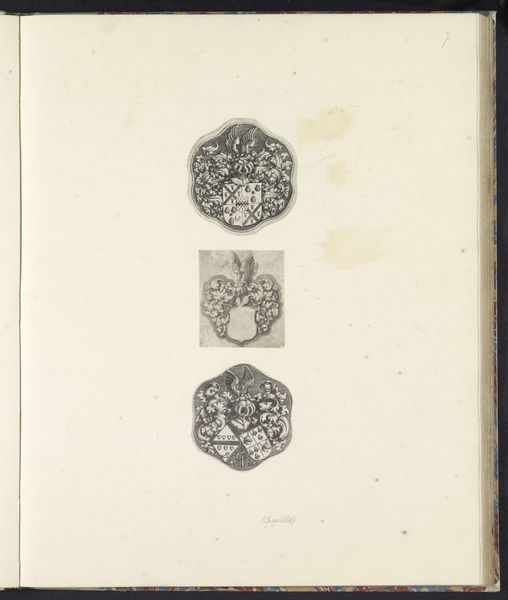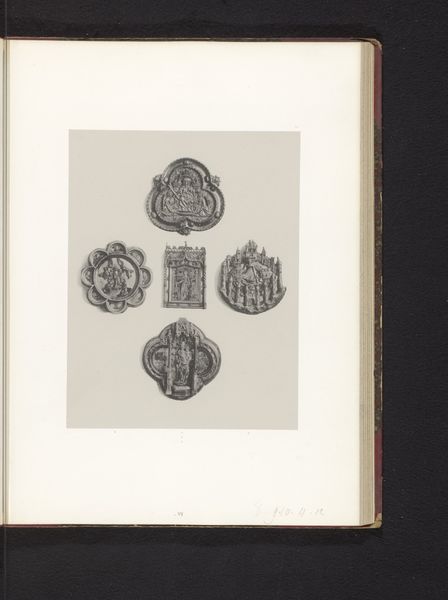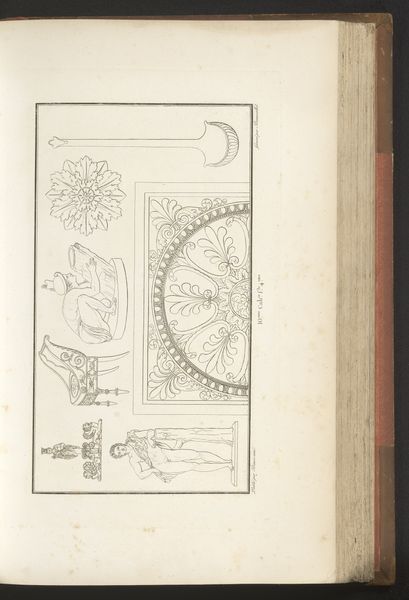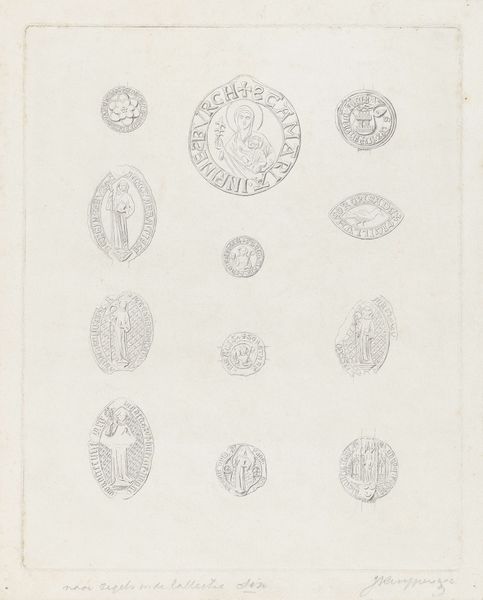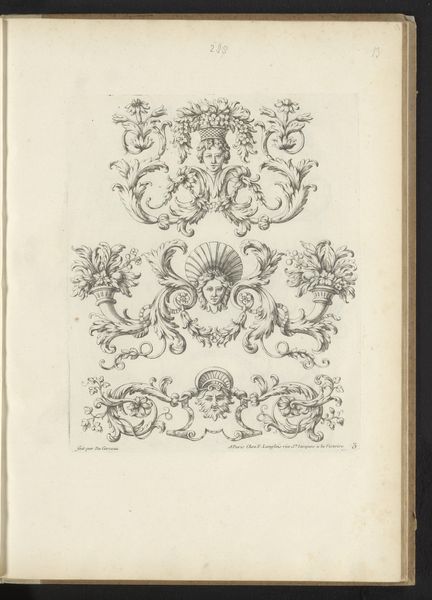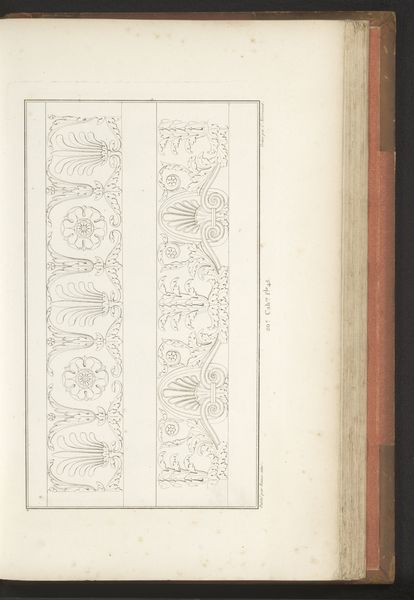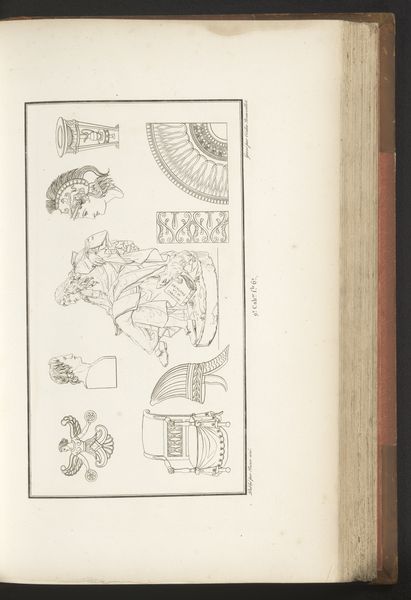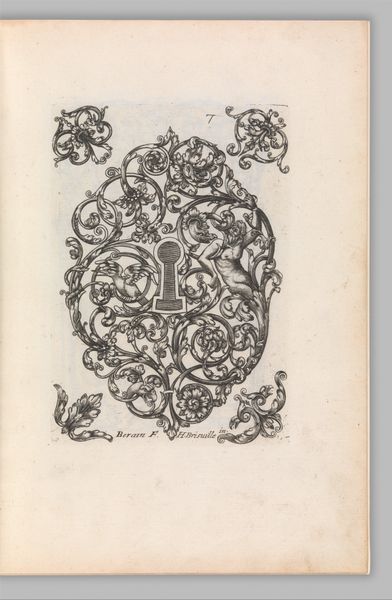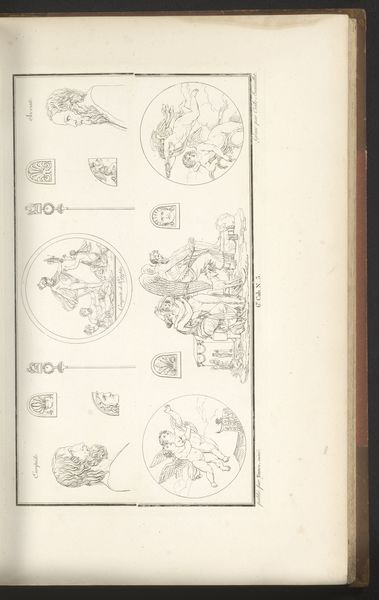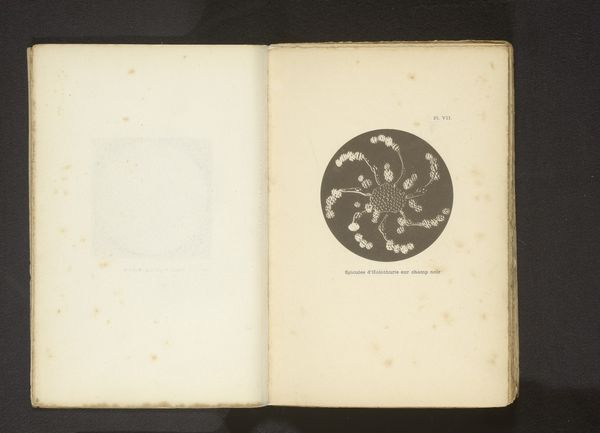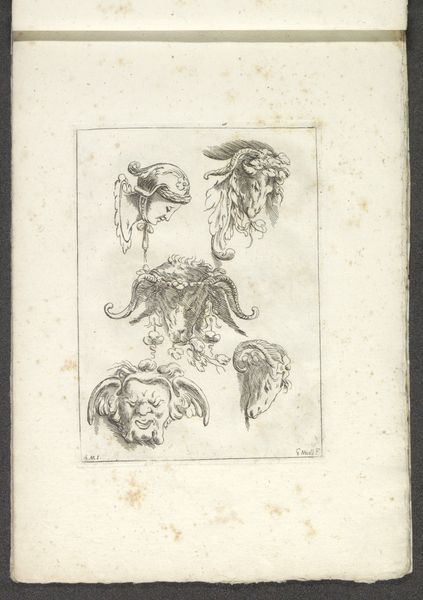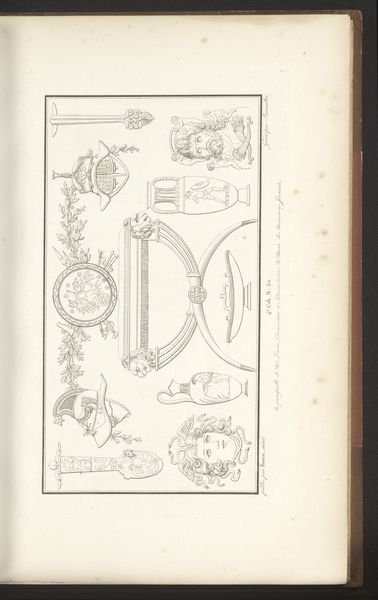
drawing, print, ink
#
drawing
#
medieval
#
pen drawing
# print
#
ink
#
geometric
Dimensions: height 383 mm, width 310 mm
Copyright: Rijks Museum: Open Domain
Curator: I’m immediately drawn to the graphic quality of these emblems—the ink on paper, the precise lines forming heraldic shapes. There's a real sense of historical weight here. Editor: Absolutely. This piece, known as "Drie Wapens," or "Three Coats of Arms," is an ink and pen drawing made sometime in the 17th century by an anonymous artist. It seems to be three different family crests meticulously rendered on a single sheet. The craftsmanship alone suggests a specific socio-political context of inherited power structures and lineage. Curator: Coats of arms are fascinating. Each component, from the choice of animals to geometric patterns, operates as a visual shorthand encoding cultural memory. For example, note the strategic placement of symbols associated with animals for luck or protection in various global cultures. The heraldic system speaks to identity across time. Editor: I see how the artist emphasizes order and control. There are clearly demarcated hierarchies, reflecting the period’s societal stratifications. Yet, aren't we looking at symbols representing power built on what was likely exploitation and unequal access? Who gets memorialized, and whose histories are erased through these inherited images? Curator: That's a compelling point. Consider the persistent symbolism of royalty embedded within this work, a continuous historical theme expressed here. These arms are a visual echo of that historical power structure. Each rose, each chevron, each crown speaks volumes about lineage. Editor: It's crucial to not isolate historical emblems as objects of craft or legacy alone. We must interpret it as political tools of inherited, often unjustified, legitimacy. How do we reckon with imagery so entangled with unjust power dynamics, when these emblems often continue to adorn institutions or public spaces today? Curator: We see art like this to reckon with history, for both its artistic interpretation and the legacy that comes along with these sorts of works. Thanks to works like this, we can now use symbolism that builds into movements for the good, creating our own family crest of sorts with better memories. Editor: Yes, in a way it provides the foundation to reflect upon both continuity and change, allowing space to analyze and create a better society in the process.
Comments
No comments
Be the first to comment and join the conversation on the ultimate creative platform.
